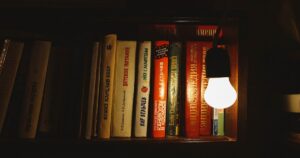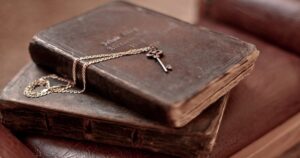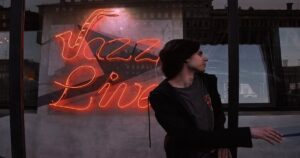25 Famous Literary Clubs in English Literature
It is a common fashion since ancient times in literature to include similar poets, novelists, or playwrights in a certain group or literary club which represents their ideology and writing style. It is nothing new to find a question or two in different State Eligibility Test or National Eligibility Test on famous literary clubs. This list of literary clubs here will help you in forming and enhancing your knowledge along with helping you in acing your upcoming examinations.
This is a small effort to help you out in sorting important groups of literature and literary clubs from the exam point of view.
List of some important literary clubs:-
- Rhymers Club- Founded in 1890 by W.B. Yeats and Ernst Rhys.
- Members:- Arthur Symons, Oscar Wilde, Lionel Johnson, Alfred Douglas, John Gray, John Davidson and others.
- Kit-Cat Club- Got its name from Christopher Catling
- Members:- Addison, Congreve, Vanbrugh, Robert Walpole.
- Spasmodic Club- Victorian Poets
- Members:- P.J. Bailey, Sydney Dobell Alexander Smith
- Georgian Poets- 1911-1922
- Series of five anthologies named Georgian Poetry, published by Harold Monroe and edited by Edward Marsh, the first volume of which contained poems written in 1911 and 1912.
- The group included Edmund Blunden, Rupert Brooke, Robert Graves, D. H. Lawrence, Walter de la Mare, Siegfried Sassoon, Ralph Hodgson, and John Drinkwater.

- War Poets- First World War
- Members:- Wilfred Owen, Robert Graves, Siegfried Sassoon, David Jones, Ivor Gurney, Rupert Brooke, Edward Thomas, and Isaac Rosenberg.
- Edwardian Poets- 1900-1910
- Members:- G.K. Chesterton, Rudyard Kipling, A.A Milne, Henry Newbolt, John Masefield, A.E. Housman, Edward Thomas, Rupert Brooke, Yeats, and Thomas Hardy.
- Movement Poets- term was coined by J.D. Scott in 1954.
- Members:- Philip Larkin, Kingsley Amis, Donald Davie, D. J. Enright, John Wain, Elizabeth Jennings, Thom Gunn and Robert Conquest.
- Imagist Poets- 20th Century Movement
- The term was coined by T.E. Hulme (father of imagism)
- Members:- Ezra Pound, Hilda Doolittle, Amy Lowell (Amigism), Ford Maddox Ford, William Carlos Williams, and F.S. Flint.
- Apocalyptic Movement- 1940s to 1950s Movement of British, Welsh, Scottish Poetry
- The New Apocalypse (1939) and The White Horseman (1941).
- Members:- Dylan Thomas, Kathleen Raine, David Gascoyne, George Barker, Henry Treece, G. S. Fraser, Vernon Watkins, and Herbert Read.
- The Fleshly School of Poetry- Name given to Pre-Raphaelite Brotherhood by Robert Williams Buchanan.
- Cockney School-
- Members:- John Keats, Leigh Hunt (Chief target), Proctor and Beddoes, and William Hazlitt
- Kailyard School- Also known as Cabbage Poets
- Members:- J.M. Barrie, J.J. Bell, S.R. Crockett, and Ian Maclaren
- Liverpool Poets- popular in 1960s
- Members:- Roger McGough, Brian Patten, and Adrian Henri
- Pylon Poets- Flourished during 1930s and also known as by the name of the Thirties Poets, The Auden Group, and Pink Poets.
- Members:- W.H. Auden, C. Day Lewis, Louis MacNeice, Stephen Spender (The Pylons- 1933).
- Together they were also known as MacSpaunday
- Scribblers Club- founded in 1713
- Members:- Alexander Pope, Jonathan Swift, John Gay, William Congreve, and Dr. Arbuthnot.
16. Pre-Raphaelite Brotherhood- It was founded in 1848 by William Holman Hunt and 6 others.
- Members:- D. G. Rossetti, Christina Rossetti, William Morris, and A. C. Swinburne.

- Areopagus- founded in 1579 at Leicester Castle
- Members:- Phillip Sidney, Edmund Spencer, Gabriel Harvey, and Edward Dyer
- Dymock Poets (American)
- Members:- Robert Frost, Lascelles Abercrombie, Rupert Brooke, Edward Thomas, Wilfred Wilson Gibson, and John Drinkwater
- Lake Poets- Name given to the three poets who were residing at Lake district by the editor Francis Jeffery of Edinburg Review
- Members:- William Wordsworth, Samuel Taylor Coleridge, and Robert Southey.
- University Wits- Term used for the Elizabethan Playwrights by George Saintsbury in the 19th century.
- Members:- George Peele, Robert Greene, Thomas, Lodge, Thomas Nashe, Thomas Kyd, John Lyly, and Christopher Marlowe.

- Confessional Poets- It stands for those poets who wrote with brutal honesty about their own life in the first person narrative. This style emerged in 1950s American society. Though the term was first used by M. L. Rosenthal in a review of Robert Lowell’s Life Studies entitled “Poetry as Confession”.
- Members:- Sylvia Plath, Robert Lowell, Anne Sexton, John Berryman, and Kamala Das.
- Graveyard School:- Also known as Churchyard School of Poetry title given to 18th century poets who used morbid imagery such as skulls and coffins.
- Members:- Thomas Gray, Thomas Parnell, Robert Blair, and Edward Young.
- Jindyworobak Movement:- It was an Australian Movement of the 1930s in which mostly poets worked for indigenous Australian culture by inculcating native language and mythology.
- It received criticism by AD Hope who called it “Boy Scout School of Poetry”.
- Members:- Rex (Reginald Charles) Ingamells, William Hart-Smith, and Brian Robinson Elliot.
- Harlem Renaissance- This movement flourished during the 1920s and 1930s. Earlier it was known as the “New Negro Movement”, named after Alain Locke’s The New Negro (1925).

- Members:- Fenton Johnson, Alain Locke, Langston Hughes, Claude McKay, Zora Neale Hurston, Anne Spencer, and Hubert Harrison (Father of Harlem Radicalism).
- Transcendentalism- It has its roots in the philosophy of Immanuel Kant. A literary movement developed in the 1820s and 1830s which centers on spiritual, and philosophical outlook towards life.
- The Dial is a Transcendental Magazine.
- Members:- George Putnam, Ralph Waldo Emerson, and Frederic Henry Hedge, Sophia Ripley, Margaret Fuller, Elizabeth Peabody, Ellen Sturgis Hooper, Caroline Sturgis Tappan, Amos Bronson Alcott, Orestes Brownson, Theodore Parker, Henry David Thoreau, William Henry Channing, James Freeman Clarke, Christopher Pearse Cranch, Convers Francis, Sylvester Judd, Jones Very, and Charles Stearns Wheeler.
You may also read and learn Authentic Ways to Prep for UGC-NET in 30 Days.







One thought on “25 Famous Literary Clubs in English Literature”